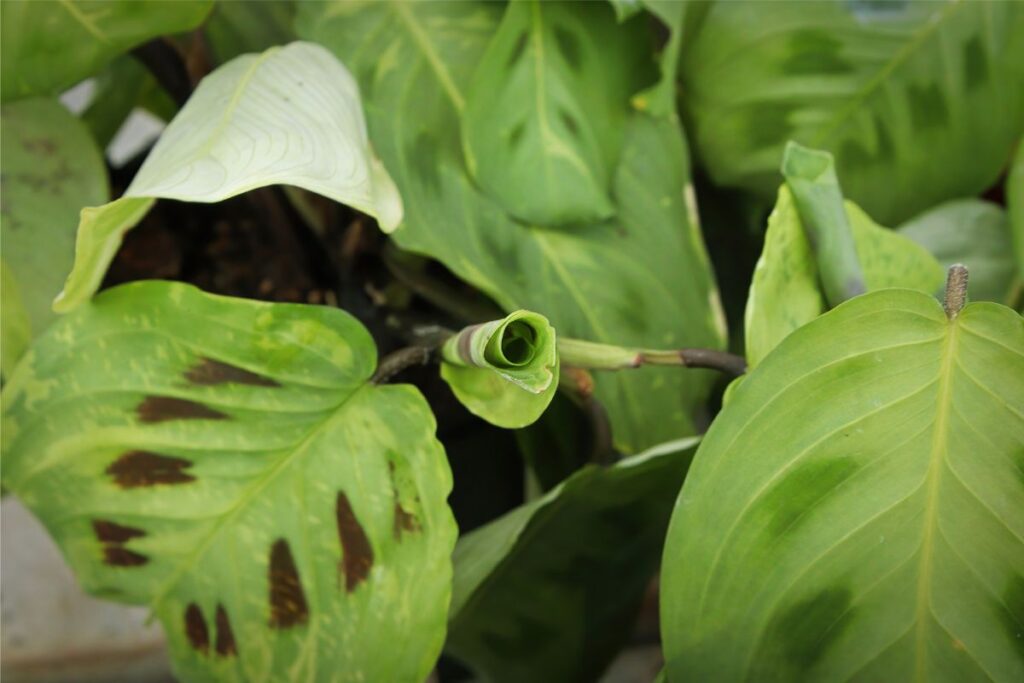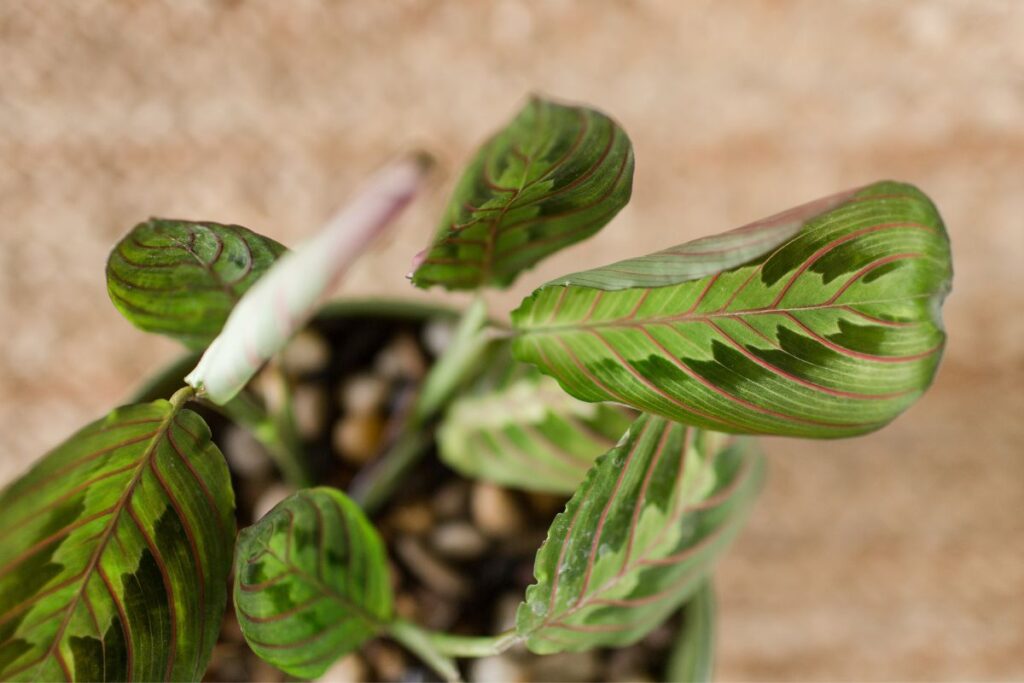Are you intrigued by the mysterious behavior of your prayer plant? Do you marvel at how its leaves close up tight at night, only to open wide during the day? It’s a fascinating process known as nyctinasty, and understanding why it happens is key to keeping your prayer plant healthy. In this article, we’ll look at why prayer plants close up in the evening and what you can do to keep them thriving. So read on and learn more about the fascinating world of these amazing plants!

Contents
Why Do Prayer Plants Close At Night?
Nyctinastic Reactions
You know that fascinating reaction your prayer plant has when it closes up at night? That’s called nyctinasty. Nyctinastic reactions are a response to environmental cues such as light exposure, nutrient levels, airflow, soil moisture, and environmental stress. These responses allow plants to adapt to different conditions in their environment and ensure survival.
Prayer plants will close their leaves in response to low light conditions or when temperatures drop too low. When the sun rises again, the leaves will open back up as the environment becomes more favorable for growth. Nyctinastic reactions can also be triggered by other factors such as nutrient levels in the soil or changes in airflow. This allows prayer-plants to adjust their growth patterns depending on available resources and helps them cope with environmental stressors such as drought or extreme temperatures.
Protection From Insects
The movement of prayer plants’ leaves at night protects from insects by closing them up. This predator avoidance is a nyctinastic reaction or a type of motion in response to the changing light available during the day and night. During the daylight hours, prayer plant leaves are open and spread wide, allowing for maximum insect pollination. At night, however, when the light fades away, their leaves fold up tightly to protect themselves against predators.
The structure of their leaves also plays a role in this process as they are thick and tough enough to avoid being eaten by most insects or other animals that hunt at night. Additionally, this folding action helps keep soil nutrition within the plant itself instead of it being washed away through rain or dew. All of these factors make prayer plants not only aesthetically pleasing but also very beneficial for pest control in agriculture settings.

Moisture Retention
By leveraging their thick leaves and folding action, prayer plants can retain moisture throughout the day and night. During the day, these plants have an active root system that absorbs water from the soil to keep their cells hydrated. This allows for nutrient uptake and efficient water conservation.
Once night falls, however, the plant begins its folding process which helps maintain a humid air environment around it. This protective barrier also serves as a means of preserving moisture in its cells while preventing water loss due to evaporation or soil drainage. In this way, prayer plants can survive even in areas where there is minimal access to water sources.
Temperature Regulation
Through their unique biology, prayer plants can regulate their temperature in order to survive; but how do they do it? Prayer plants have evolved the ability to open and close their leaves at night, as a way of making photosynthesis more efficient during the day. This process helps increase humidity levels around the plant, which in turn provides shade and utilizes carbon dioxide. By doing this, they are able to better regulate temperatures around them that would otherwise be too hot for them to survive. This adaptation allows prayer plants to thrive even under extreme conditions.
The combination of the physical properties of leaves and their ability to open and close during different times of the day is what makes prayer plants so resilient when it comes to regulating temperature. During colder days or nights, they will keep their leaves closed to conserve energy and stay warm. On warmer days or nights, however, they will open up their leaves to let light penetrate through them for photosynthesis. The two processes work together hand-in-hand so that these plants can remain healthy despite any changes in temperature or the environment around them.

Protection From Fungal Issues
You’ve probably noticed that prayer plants close their leaves at night. It’s not just a quirky biological adaptation; it actually helps the plant protect itself from fungal issues. When the light levels drop, the leaves automatically shut tight and this reduces the chance of disease-causing spores settling on them. Photosynthesis also stops when the leaves close, which means that seed variations or changes in soil composition won’t affect it as much.
The closing of prayer plant leaves is a signal to other parts of its system that it needs to protect against potential stressors like fungus, bacteria, and disease. In response, this triggers an internal process where its defenses are strengthened to ward off any potential threats. Therefore, by closing their leaves at night, prayer plants are able to better guard themselves against fungal issues while keeping other aspects of their health intact.
Why Is My Prayer Plant Not Praying?

Do you have a prayer plant that just isn’t praying? You’re not alone. Prayer plants are notoriously finicky, and it’s all too easy for them to become unhappy. We’ll now explore the three most common reasons why your prayer plant might not be thriving: lack of light, too much light, and lack of humidity and water.
Lack of light
The prayer plant is a tropical plant that requires bright but indirect light to thrive. When there is a lack of light, the plant may not be able to photosynthesize properly, which can lead to a decrease in the plant’s overall health and growth. This can cause the leaves of the plant to droop or close up, making it appear as though it is not “praying” as it typically does. To ensure that your prayer plant is healthy and happy, make sure to provide it with plenty of indirect sunlight or artificial light if necessary.
Too much light
Prayer plants are known to require bright, indirect light but can be damaged by too much direct sunlight. If your prayer plant is not praying, it could be a sign that it is receiving too much light. In this case, you should move the plant to a location with less direct sunlight. You can also provide it with some shade using a sheer curtain or by placing it in a slightly darker area of the room.
Lack of humidity & water
Prayer plants are native to tropical regions and require high levels of humidity to thrive. Without enough moisture in the air, the plant may become stressed and unable to fully close its leaves, resulting in a lack of “praying”. Additionally, prayer plants require regular watering to keep their soil moist, but not waterlogged. If the soil is too dry, the plant may also become stressed and unable to close its leaves. It’s essential to maintain a consistent watering schedule and ensure the plant is in a location with adequate humidity to encourage healthy growth and leaf movement.
